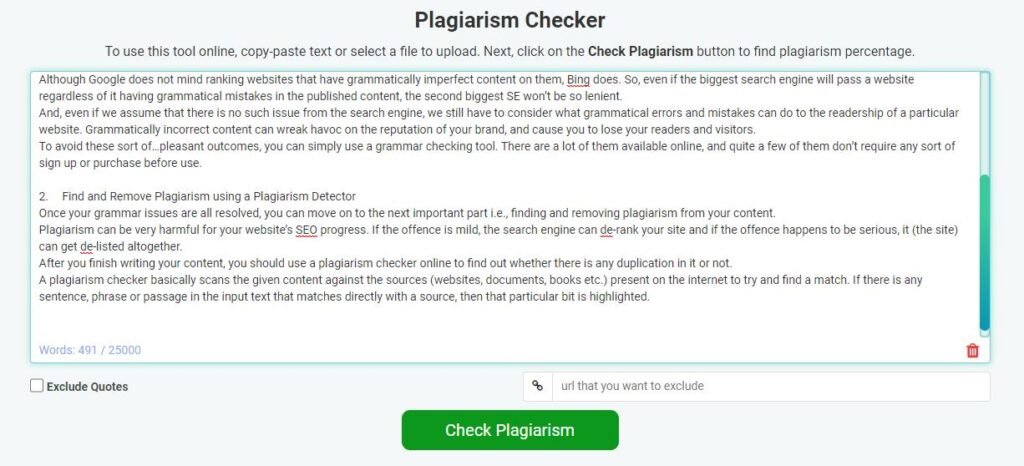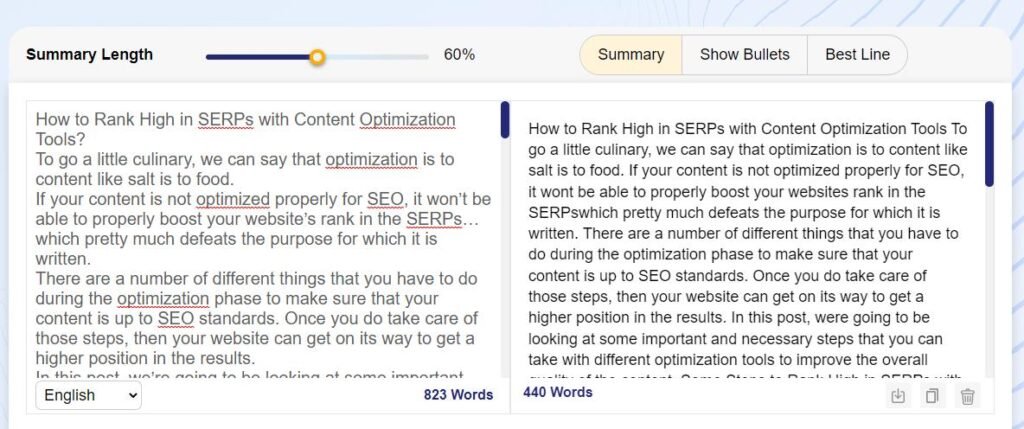To go a little culinary, we can say that optimization is to content like salt is to food. If your content is not optimized properly for SEO, it won’t be able to properly boost your website’s rank in the SERPs…which pretty much defeats the purpose for which it is written.
There are a number of different things that you have to do during the optimization phase to make sure that your content is up to SEO standards. Once you do take care of those steps, then your website can get on its way to getting a higher position in the results.
In this post, we’re going to be looking at some important and necessary steps that you can take with different optimization tools to improve the overall quality of the content.
Some Steps to Rank High in SERPs with Content Optimization Tools
With each step, we’ll mention the respective tool that you can use for the particular purpose. That way, you’ll be able to easily follow along.
1. Eliminating Grammatical Errors using a Grammar Checker
One of the main steps that you have to take after completing your draft is to find and remove grammatical errors from it.
Although Google does not mind ranking websites that have grammatically imperfect content on them, Bing does. So, even if the biggest search engine will pass a website regardless of it having grammatical mistakes in the published content, the second biggest SE won’t be so lenient.
And, even if we assume that there is no such issue from the search engine, we still have to consider what grammatical errors and mistakes can do to the readership of a particular website. Grammatically incorrect content can wreak havoc on the reputation of your brand, and cause you to lose your readers and visitors.
To avoid these sorts of…pleasant outcomes, you can simply use a grammar checker tool. There are a lot of them available online, and quite a few of them don’t require any sort of sign-up or purchase before use.

2. Find and Remove Plagiarism using a Plagiarism Detector
Once your grammar issues are all resolved, you can move on to the next important part i.e., finding and removing plagiarism from your content.
Plagiarism can be very harmful to your website’s SEO progress. If the offense is mild, the search engine can de-rank your site and if the offense happens to be serious, it (the site) can get de-listed altogether.
After you finish writing your content, you should use a plagiarism checker online to find out whether there is any duplication in it or not.
A plagiarism checker basically scans the given content against the sources (websites, documents, books, etc.) present on the internet to try and find a match. If there is any sentence, phrase, or passage in the input text that matches directly with a source, then that particular bit is highlighted.

However, when it comes to optimizing the content, you’re not supposed to stop at just checking for plagiarism. Rather, you also have to remove it from your content.
Although there are a couple of different ways to remove plagiarism from your content (such as adding hyperlinks and citations etc.), one of the most efficient approaches is to rewrite the problematic part simply.
To rewrite content, you can take the help of an online rewrite article. These tools can change the look of your text in a matter of seconds without changing the original meaning and context. Using a tool is much easier than manually altering the content to make it unique.
There are a lot of rewriting tools available online. You can find them by doing a simple Google search. However, before using any one of them in earnest, you should try it out a couple of times with some random text.
3. Make Your Content Concise Using Summarizing Tools
When it comes to creating and publishing content on your website for any purpose whatsoever, you have to make sure that it is easy to go through. And one way to do that is to keep your content concise.
Raving on the same topic for paragraphs on end is not going to help your website get a good place in the SERPs. Why? Because such content can repel your readers and visitors, and this can result in an increase in your site’s bounce rate.
To avoid making your content too lengthy, you can just use summarizing tools. Online summarizers also fall in the category of optimization tools due to the fact that they can enhance your content’s readability.
Take an example. Suppose you have a blog post in which you have unnecessarily explained and diluted a topic in a couple of hundred words whereas it could have been easily elucidated in just 50. In this situation, you can use a summarizing tool to shorten that particular part and make it easier to read.

Summarizing tools use the extractive summarization method, which means that they use the existing sentences in the given text rather than using words of their own.
Conclusion
While there are a lot of other steps that you can follow for optimizing your content, the ones we mentioned above are some of the basic ones.
Removing grammar errors and plagiarism from your content are two of the most fundamental optimization steps that you should not leave out in any circumstances. After these two necessary steps are taken, you can move on to polishing the write-up by adding links, headings, and images, and so on.




